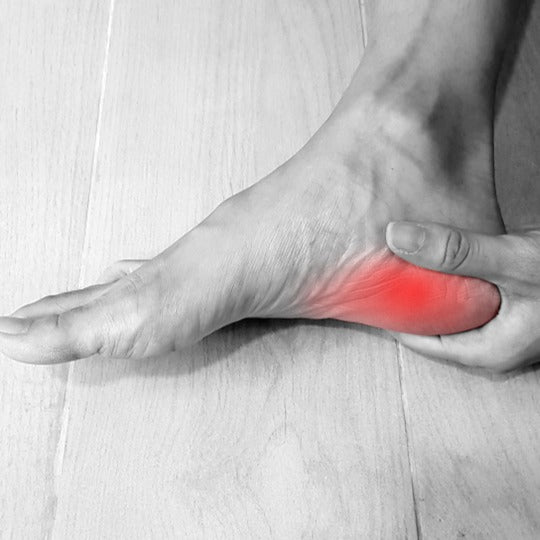Aucun produit dans le chariot
Helping Workers with Plantar Fasciitis

Plantar Fasciitis (plan-tar-fash-ee-eye-tis) is one of the most common causes of heel pain and can lead to much more serious work-related strain and injury. This condition accounts for almost 15% of all foot-related complaints.
The condition involves inflammation of the plantar fascia (a tough fibrous band of tissue that runs along the sole of the foot with attachments to the heel bone) and to the base of the toes. The plantar fascia provides support to the arch of the foot and plays an important role in normal walking.
The main symptom of Plantar Fasciitis is pain in the center of the heel. This is usually worse in the morning when the foot is first placed on the floor.
The pain associated with Plantar Fasciitis is typically gradual. But occasionally, the onset of pain can be sudden, triggered by activities like a worker missing a step or after jumping from a height. The degree of discomfort can sometimes lessen with activity after “warming-up”, but unfortunately can also become worse with prolonged or vigorous activity.
The main contributing factors causing Plantar Faciitis are: age, weight and more extreme foot arches (both low or flat feet and high arches). In addition, work surfaces and work shoes can and do contribute to the condition. Very hard work surfaces means the foot-on-floor impact is more severe. Flooring that provides cushioning or matting can be help reduce the impact. It’s also important for workers to wear safety shoes or work boots with the right amount of cushioning to support the foot and relieve the potential triggers associated with this condition. You can also recommend that workers do foot stretches, like toe and calf stretches, to reduce tightness in their feet and heels specifically.
Workers in occupations that required prolonged standing and walking are at a higher risk for developing Plantar Fasciitis. Helping workers mitigate some of the potential risk with the right flooring, matting and safety footwear that helps cushion workers feet are ways you can help minimize their risk and “soften the blow” of Plantar Faciitis for your workforce.
Safety footwear with a slightly elevated heel or wedge sole tend to offer more heel support than flat footwear where the heel is at the same height as the ball of the foot. Some safety shoes to consider include Timberland Powertrain A16N1 and the STC Trainer 29029. In work boots, the Timberland Gridworks A12EZ and the Sidewinder Zone 2.0 8208 also tend to work well. Adding insoles is just as an important. We recommend our FORM insoles.
Find more information on Plantar Faciitis here: https://myhealth.alberta.ca/Health/Pages/conditions.aspx?hwid=hw114458
